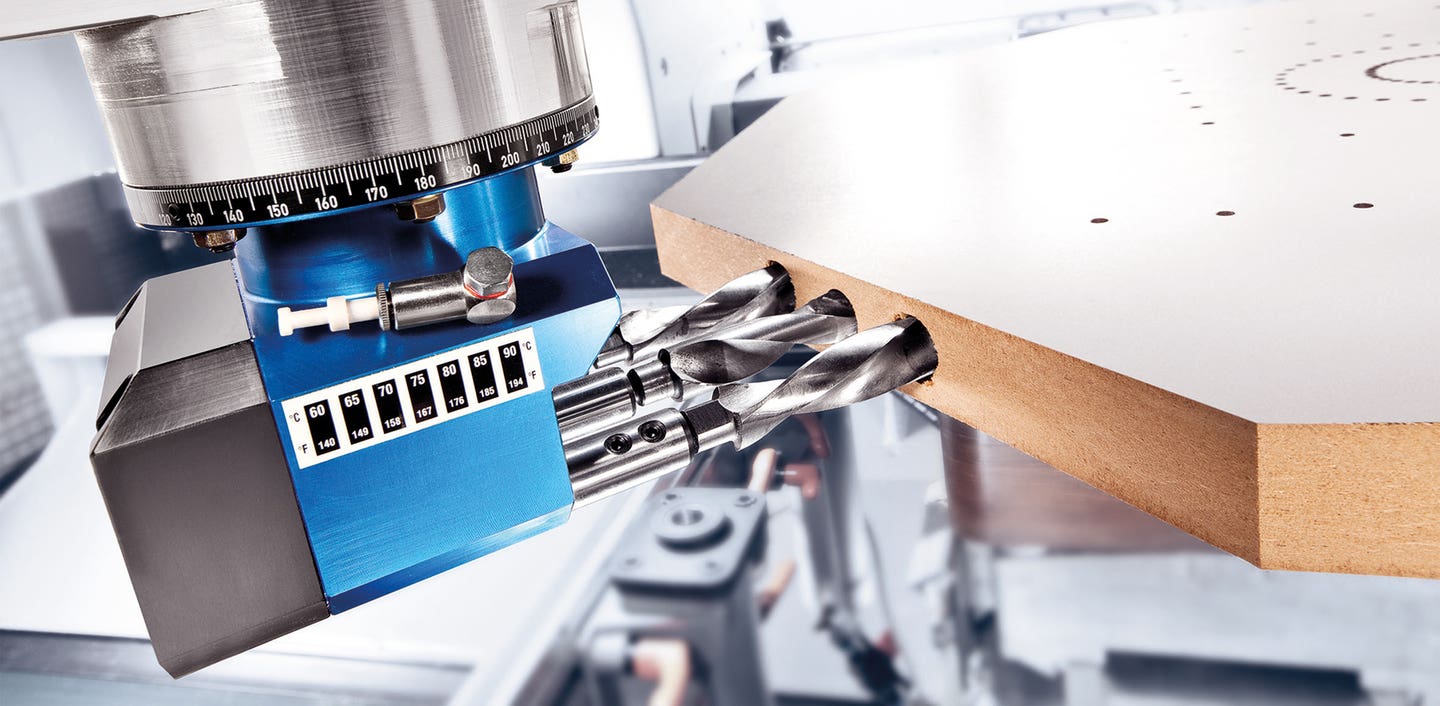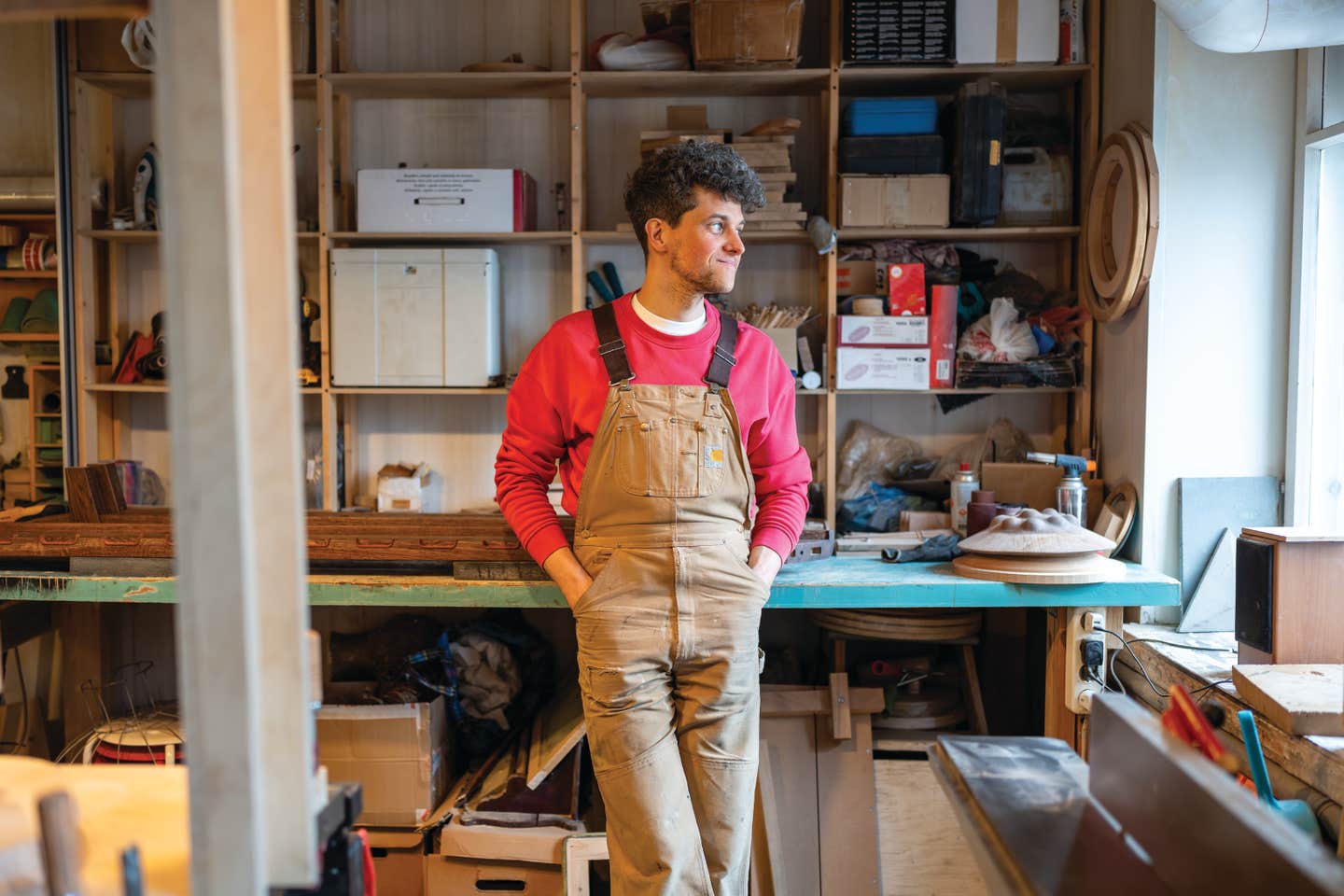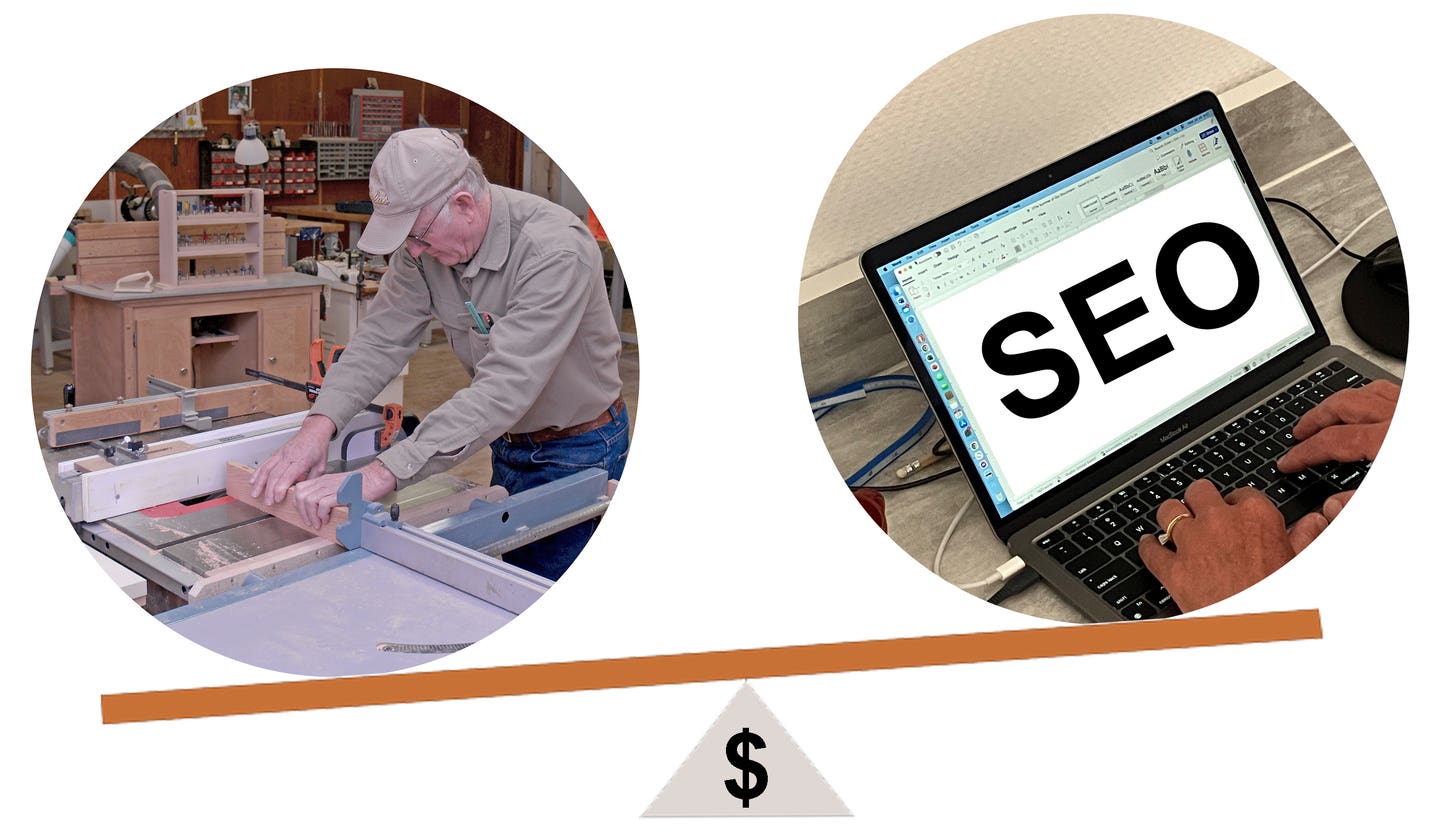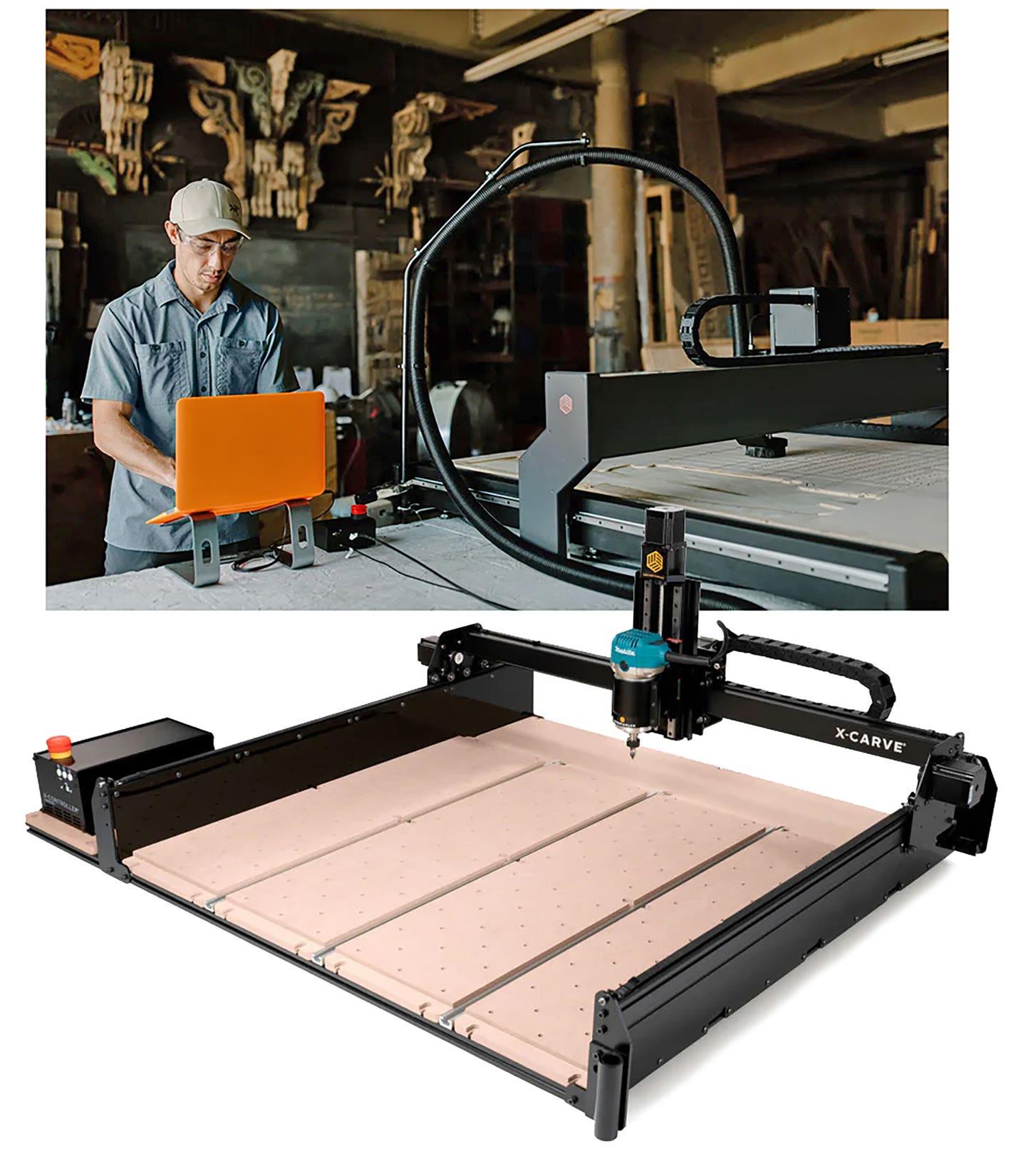Boost your profile with sign-making jobs
An idle CNC is a terrible thing to behold. No woodshop owner wants to witness such a large investment lying dormant for lack of a job. But between kitchens and…
An idle CNC is a terrible thing to behold.
No woodshop owner wants to witness such a large investment lying dormant for lack of a job. But between kitchens and casework, this versatile machine might just be able find some fill-in work on Fifth Avenue. The combination of cutters and CAD that brings a cabinet to life can also deliver a strong advertising message. Because a CNC can work in wood, plastics, composites and even non-ferrous metals, the technology has allowed many woodshops to specialize in building custom signage. Others offer signage as a menu item that complements the casework being built for commercial, institutional or industrial clients.
The first key to sign making is to have somebody on staff with a creative bent. Building custom signs requires imagination, competency in a variety of mixed media, some artistic experience or formal training, and a shop that owns the right equipment. A CNC router is usually the centerpiece of a woodshop’s sign-making equipment. But virtually every other machine in the shop can also come into play, as does tooling.
CNC tooling for sign makers is usually oriented to the material that’s being cut, milled or shaped. High-speed steel, carbide tips, solid carbide and carbide-insert cutters are all available and those choices need to be matched to the density and hardness of the workpiece and the amount of stock being removed. For example, cutting into foam involves different parameters than solid aluminum. A shop that has heretofore only worked with wood might want to consult with both the CNC and the spindle manufacturer before settling on solutions for other materials.
Sign makers’ kits
Several major suppliers offer packaged kits that offer a variety of tooling designed to render signage. For example, Laguna Tools (lagunatools.com) offers an Amana set that contains eight industrial brand bits. Included are a 1/2” 60-degree V-bit, a 3/16” 7.5-degree angle, 1/4” aluminum and plastic cutting O-flutes, a 1/8” ball nose, a 1-1/2” insert 45-degree V-bit, a 1/4” shank 30-degree V-tip insert and a 1-1/2” insert 90-degree V-groove. Together, this package lets a woodshop work in a wide array of materials including wood, foam-board, acrylic, nylon, PVC, polycarbonate, solid-surface materials, HDPE, ABS, UHMW, HIPS, PE, PET, polystyrene, polypropylene and acetal.
Note that sign-making bits are generally on the lighter side: they don’t have a lot of mass as they’re usually asked to engrave or lightly carve, rather than remove large amounts of waste. By the way, Amana Tool (amanatool.com) also offers seven individual bits that are specifically suited to sign making.
Freud Tools (freudtools.com) has also put together an eight-piece sign-making set. This collection of solid-carbide and carbide-tipped cutters includes a couple of upcut spiral ball nose bits, a 6.2-degree x 1/32” tapered ball, a 5.4-degree x 1/16” tapered ball, an upcut spiral straight bit, a down-spiral straight cutter, a 3/4” 90-degree V-groove and a 1/2” 60-degree V-groove bit. They are made from TiCo carbide with chromium, which is designed and manufactured by Freud.
Rockler Woodworking and Hardware (rockler.com) has several proprietary bits and sets for sign making. One of these is set No. 26694, which includes a 1/2” diameter by 5/8” carbide-tipped 60-degree V-groove bit, a 1/2” diameter 90-degree V-groove bit and a 3/8” diameter by 3/8” core box bit. The company caters to small-shop and hobbyist users, so it also offers several different lettering templates, plus a package called the Sign Maker Accessory Box (No. 59369). This includes 17 router bits, a large sanding mop and some CarveWright software named Project Designer Pro that features advanced design tools.
Eagle America (eagleamerica.com) offers a wide range of tools and jigs for sign making, including round-nose chamfer bits, veiners and V-groove plunge bits. The company also supplies plunge roundover bits with and without guide bearings.
For sign makers working with curves and intricate profiles, U.S. Router Tools (usroutertools.com) offers a number of bits that were designed for cutting softer and more flexible plastics.
Katana sign carving sets (available through mlcswoodworking.com) come in both five- and seven-piece micro-grain carbide sets. The former, with 1/4” shanks, includes upcut and down-spiral straight bits, a veiner and two round-nose cutters (1/8” and 1/4”). The latter has three 1/2” shank bits and four 1/4” ones.
Whiteside’s No. 705 CNC Starter Set (available through carbideprocessors.com and other outlets) is a five-piece package of 1/4” shank bits that is suited more to carving than engraving. It includes 1/8” and 1/16” ball-nose bits, a two-flute upcut and two V-bits — 60 and 90 degrees.
Comsurge Tooling (comsurge.com) has a number of carving bits in various profiles, including pod bits in both left and right rotations. Infinity Cutting Tools (infinitytools.com) has an array of kits and individual router bits available and Integra (ipgandm.com) has a good selection of knives, spirals, veining and V-groove tools. Leuco Telcon (leucotelcon.com) manufactures a wide range of PCD-tipped end mills for machining composites, CMC, MMC, high Si Al and other abrasive materials and some of them are well-suited to sign making. And Practical Products Co. (practicalprods.com) sells Trim-Ease lube, which will help all kinds of bearing and non-bearing guides behave themselves properly when milling materials used in building signs. In that vein, if a shop is contemplating working in new materials, a conversation with the cutting consultants at Pro Cut (procutsaw.com) might be well worth the time. They specialize in machining, sharpening and milling challenges.
More than bits
Most CNC routers offer the capacity to make signs and some manufacturers focus more intently than others on this aspect of the technology. For example, Vision Engravers (visionengravers.com) offers a wide range of entry-level and medium-sized engravers and routers from 6” x 8” to 4’ x 8’. Because the focus is often on engraving rather than routing, some Vision tools can work in more than one plane or one family of materials. The company’s Rotary Attachment permits engraving on cylindrical items up to 10” in diameter. And a new oscillating knife now provides the ability to cut semi-rigid materials such as card stock with great precision. Vision also makes it easy to create ADA-compliant signs with its Automatic Raster Braille insertion tool, which saves time by eliminating work that is normally done by hand.
The new Desktop Max from ShopBot (shopbottools.com) will be of interest to shops that build signs under 36” x 24”. Running on household current, it comes with either an easy-to-remove aluminum tool bed or a vacuum hold-down deck kit. The company also offers a variety of tooling for the Max that includes both 30- and 60-degree engraving bits, some ball nose and O-flutes, and a six-piece sign-maker’s bit kit. There’s also a diamond drag bit for engraving signatures, logos or artwork in plastic, metal, glass and stone. A woodshop can use this bit to create signage in aluminum, brass, glass, mirrors or granite, or score cut lines on plate glass for creating stained glass sign elements. Its floating head automatically regulates pressure on the diamond tip, making it easy to engrave a solid and uniform line on imperfect or warped material.
Sign Warehouse (signwarehouse.com) is one of many suppliers that can deliver tools outside the realm of traditional woodworking, such as vinyl cutters, plotters and trimmers. The company also carries a large inventory of sheet vinyl in both solid colors and patterns, plus all the blades and supplies needed to work them. U.S. Cutter (uscutter.com) is a similar supplier that carries everything from cutting tools to design software for plotting and printing.
For shops that want to add metal lettering to wood or plastic signage, Baileigh Industrial (baileigh.com) offers an affordable and easy to operate letter brake. The LB-8 makes fast work of channel letters and its open-jaw design helps speed up production when compared to using a standard sheet-metal box and pan brake. The material can just be flipped over for a reverse bend, instead of having to slide it all the way into the brake and back out again.
Building signage in a woodshop can range from simple projects using templates and tools from suppliers such as MilesCraft or Craftsman to fulltime CNC manufacturing. And whether the shop is planning on making signs between casework jobs or switching its entire focus to this niche, most CAD software manufacturers offer some comprehensive solutions. For example, En Route (enroutesoftware.com) “allows you to first create 2-D artwork by using unique design tools and then add 3-D reliefs and textures using parametric textures, rapid texture/rapid picture and bitmaps. EnRoute’s rapid texture tool also lets you create unique surfaces by taking advantage of the shape and diameter of your cutting tools while at the same time reducing cut times.” And both Aspire and VCarve Pro from Vectric (vectric.com) include tools that are used to design and carve complete signs in one piece of material or to accurately create separate parts for larger projects that can be assembled on site.
A woodshop can also outsource the CAD and just use CNC downtime to mill plastic or wood parts for local sign shops, rather than taking on the whole design, fabrication and installation processes.
This article originally appeared in the January 2017 issue.







